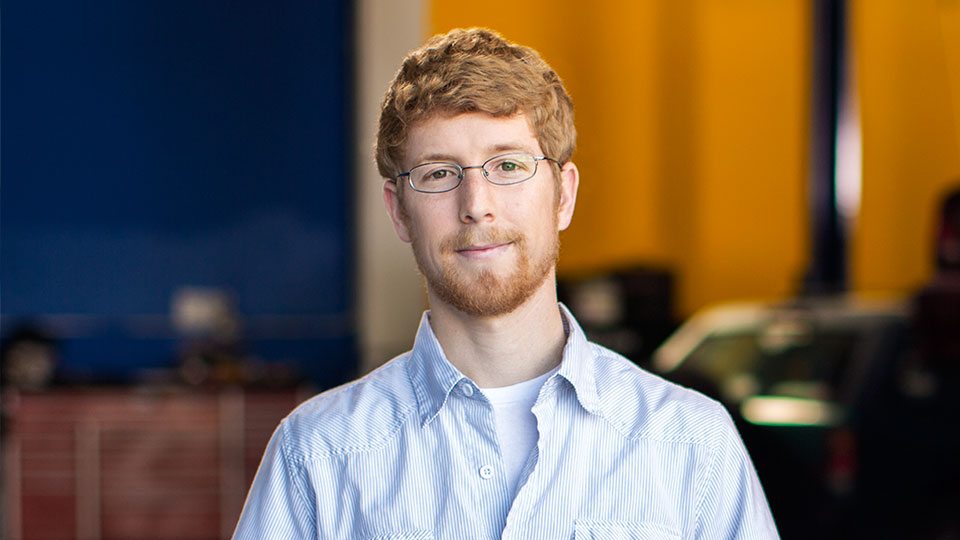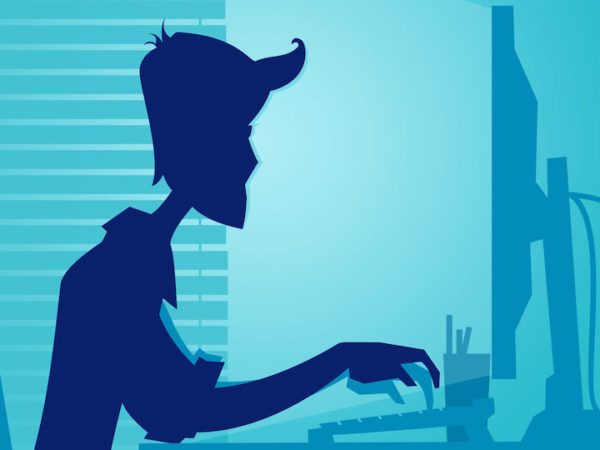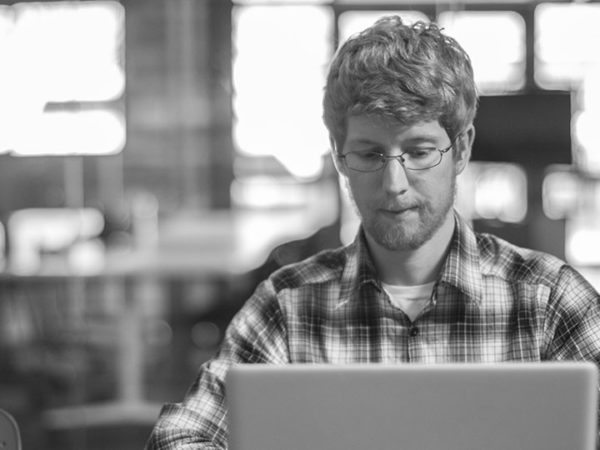
As I look back on this 7 year span of my life, I can’t help but think of the classic Anchorman quote, “Boy, that escalated quickly.” Life in the Silicon Valley has been somewhat of a roller coaster, including: community college, two internships, my dream job, freelancing for big name clients, marriage and starting a business.
Before we start, I just want to say that I’m not particularly proud of how I handled myself at these internships. To put it bluntly, I was unprofessional. The reason I’m sharing my story is that I hope it can be an encouragement to others, especially a younger audience that may be doubting their career path and struggling with their passion.
Alright, let’s do this.
Getting fired from an internship.
Originally, I came to the Bay Area with the pipe dream of studying film and transitioning to a successful career in Hollywood, where I could work on A-List movies and brag about my name in the credits. That was a long shot to begin with, and I quickly realized that it wasn’t for me. I didn’t want to abandon my passion for video though, so I pursued what any logical college student would. A paid internship. No, this isn’t about that movie with Owen Wilson and Vince Vaughn. It’s kind of like that, but not really.
My career began at a corporate video house making minimum wage. This is where I was exposed to how little I actually knew about video. I started out as the “compression guy”. Which means I took raw videos and compressed them into various formats for the internet and beyond. Sound glamorous? It wasn’t. The redeeming factor of this job was that I had a very wise mentor showing me the ropes of After Effects, where I would composite green screen footage of various executives from AMD and Cisco. After a few months of that, my interest started to drop severely and it showed in my work. It got to a point where I consistently felt depressed, which affected every area of my life. This was one of the first signs that I was not cut out to be an employee. My boss had no choice but to let me go after I showed up to work while he was at lunch. Yes, I was fired. It sucked. The worst part was I deserved it. With no backup plan, I was left with my thoughts about how I had neglected this valuable opportunity.
The strangest job experience, ever.
I wish I could skip this part of the story but the experience is too strange not to share. After recovering from being fired, I applied to as many video related jobs as possible, but the pickings were slim. Little did I know, this was in the middle of the 2008 financial crisis (I was naive to the economy back then).
Several months passed, desperation set it in, and a new job offer finally came along. At surface level it seemed great. The job was editing sports footage into short highlight reels for a high-end membership website, and it paid twice as much as my last job! Awesome. I started the first week with a powerful enthusiasm that died faster than I thought was possible.
Here’s what killed me:
- There was no one to learn from. I was the only person in the “video department”.
- I was given a slow laptop, student edition software and forced to work with large footage files over a painfully slow internal network.
- No one acknowledged my existence! I could literally disappear and no one would notice. In fact, I started to do just that. Since I logged my hours into an online service and received paychecks automatically, no one had to check-in with me. It was the most conflicting job experience ever. I was happy with the money, and the company seemed credible, but due to the lack of leadership it was incredibly depressing.
Being offered my dream.
This is where it really gets interesting. During all of this, I was still going to night school and met a new friend. He worked at a well established video production studio just two exits down from where I was working. We met up for lunch one day and he gave me a tour of their office. That’s when a new door opened… no pun intended.
The studio seemed perfect: top-notch equipment, high-quality work and big name clients. I met the Creative Director and told him that I’d be willing to work for free. Later, I found out that my friend had showed him one of my YouTube videos when I left. Apparently it was enough to convince him I “knew my stuff”—I didn’t. Two days later, I got a call from the same guy, asking if I could come in and work on a project while their employee was out of town. He sensed my hesitation and added, “What are they payin’ ya? I’ll double it.” Trying to muffle my excitement, I accepted.
Now I had a dilemma. Do I quit my full-time job for a temporary one, in hopes that it becomes something more? Or try to do both at the same time? Well, I opted for the latter. I was terrified that this Creative Director had placed a little too much faith in me and that he would soon find out I was under qualified for the job. It was a risk worth taking.
The following week, I went to my intership in the mornings, then left for long lunch breaks to freelance at the new studio in the afternoons. No one noticed. I did that for about 2 weeks and the freelance project went surprisingly well. Afterwards, everyone was happy and the Creative Director asked me to start immediately on a new gig… and gave me a raise. That’s when I decided to stop straddling the fence. While driving to work the next day, I was torn with how I was going to quit my internship. I called my boss from the road and left a voicemail explaining the situation with raw honesty. He called back a few minutes later, told me he understood and encouraged me to pursue my dream. It was bizarre. No two weeks notice, no exit interview. I just started working full-time at the new studio the very same day.
Learning on the job.
Now I was getting paid more than I dreamed of, to do something that I was never officially trained to do. All of my knowledge came from online tutorials! In fact, I was frequently taking time to improve my skills on the job and my boss actually loved that. It was both awesome and incredibly stressful. In a matter of months, the lead motion graphic artist at the studio had to quit due to family issues. Suddenly, I was the go-to guy. The lead motion graphic artist. At 21 years old. The next two years were a great example of “fake it ’till you make it”.
I struggled with anxiety attacks while creating designs and animations for high-paying clients. Most times, I had no idea how anyone was going to react to my work. Despite liking the job more than anything I had ever done, it was the most emotionally and physically draining. However, it was also the most beneficial. Since the studio was small, I got an inside look at how all the pieces worked together. Including how much the clients valued these services. It was a starting point for understanding what I was worth and how it compared to the rest of the industry. Eventually, the company had to reduce everyone to contractor status for financial reasons. It wasn’t so bad, since they still brought me in frequently to work on projects, but in my down time I realized it was time to figure out my next move.
A season of freelancing.
As a freelancer, my day rate ended up doubling after various negotiations. Which, despite sounding really expensive to me, didn’t turn most clients away. In fact, they seemed to find me rather quickly thanks to word of mouth from previous co-workers and clients. The only thing I really hated about freelancing was producers (a.k.a the middle men)… and working with so many different ones.
After a year and a half of contracting at various studios, I noticed a trend in the way they did things, a trend that I desperately wanted to change: a lack of creative development and teamwork. It became palpable in the way I presented myself. I was becoming the over-confident freelancer that kept trying to convince producers to do things differently. To shake up their process. It didn’t fly. I had heated discussions that often ended in disappointment. This was both frustrating and enlightening. By getting to see how other studios and independent producers worked, I gained the confidence that I could provide the same services for an even better value to clients. The more I thought about my own business, the less I could focus while freelancing. That’s when I knew it was time to make a big change.
Starting my own studio.
This part of the story is still unfolding but thus far it’s been the most rewarding move of my career. As of this post, I’m early into my fourth year of running Modio. The first year was rough. I knew nothing about business and had to spend months researching how it would all work. Now that the structure is built, it’s smoother sailing. There’s still plenty of hard work and occasional stress involved, but it’s an entirely different kind. A productive kind. The kind that makes me want to build something bigger than myself. The most rewarding part so far has been the ability to work with other creative people who love what they do, everyday. As a freelancer I felt isolated from everyone; now I get to tackle projects with these handsome faces and adapt our process to make sure we’re all producing our best work.
What does this all mean?
With the disappointment and frustration from my previous jobs, I thought, “Maybe I’m just not cut out for this kind of work? Maybe I’m just a whiner? Maybe I’m just young and naive?” Perhaps I’m all of those things, but really that doesn’t matter. What matters is what I’m going to do about it. A book from Seth Godin called Poke the Box really helped to put that in perspective for me. Now I’ve chosen to put my ideas into action and build something from all these experiences. The hardest part was learning to establish confidence in myself and that failure can be healthy, as long as something is learned from it.
9 Comments
-
This post might be old, but I found it insightful. I’m across the pond and was in a similar boat – I worked at a graphic design agency that needed videos made, and I was asked to do them. As I was the only person with any interest in video work, I had to learn everything from online tutorials. I started working full time at a new studio as a motion designer 12 months ago, and am currently in that ‘fake it ’til you make it’ period that you mentioned in the post! Great to hear of your success in the field, and it really shows the importance of networking.
-
Author
Hey Max, glad to hear this was helpful. Thanks so much for sharing your comment and story!
-
-
Hey Adrian, very interesting read. Followed it from the Reddit discussion about the career path of motion designers. I’ve been in the game for about 9 years and feel I need to adjust something, refresh myself. Your article and experiences have really helped me put a few things in perspective.
Thank you!
Hope it’s all still going well?!-
Author
Thanks for the comment. I’m really happy to hear you got some value from it! Yes, things are going well. It’s been a fullfilling January, which is nice. I’m focusing hard on Plot, my storyboarding app, with all the spare time I can muster.
-
-
the knowledge is found in the journey and so is the enjoyment – wonderful piece Adrian
-
Thank you, Mike! Appreciate you taking the time to read it. 🙂
-
-
Very inspirational!
-
Thanks, Jesee! 🙂
-
Pingbacks
-
[…] Post: How I Went From Intern to Business Owner […]
[…] Post: How I Went From Intern to Business Owner […]



